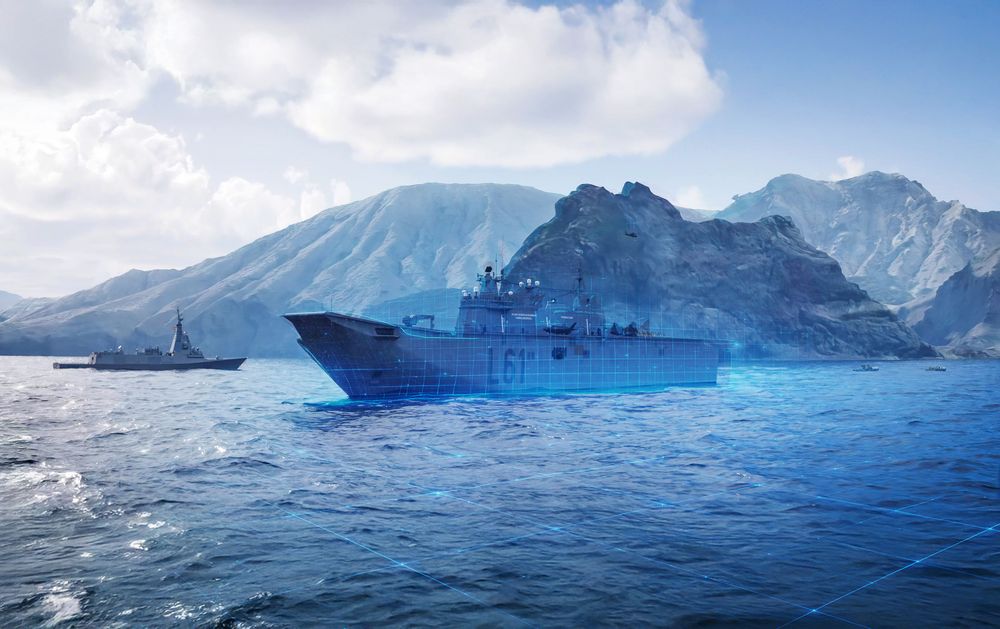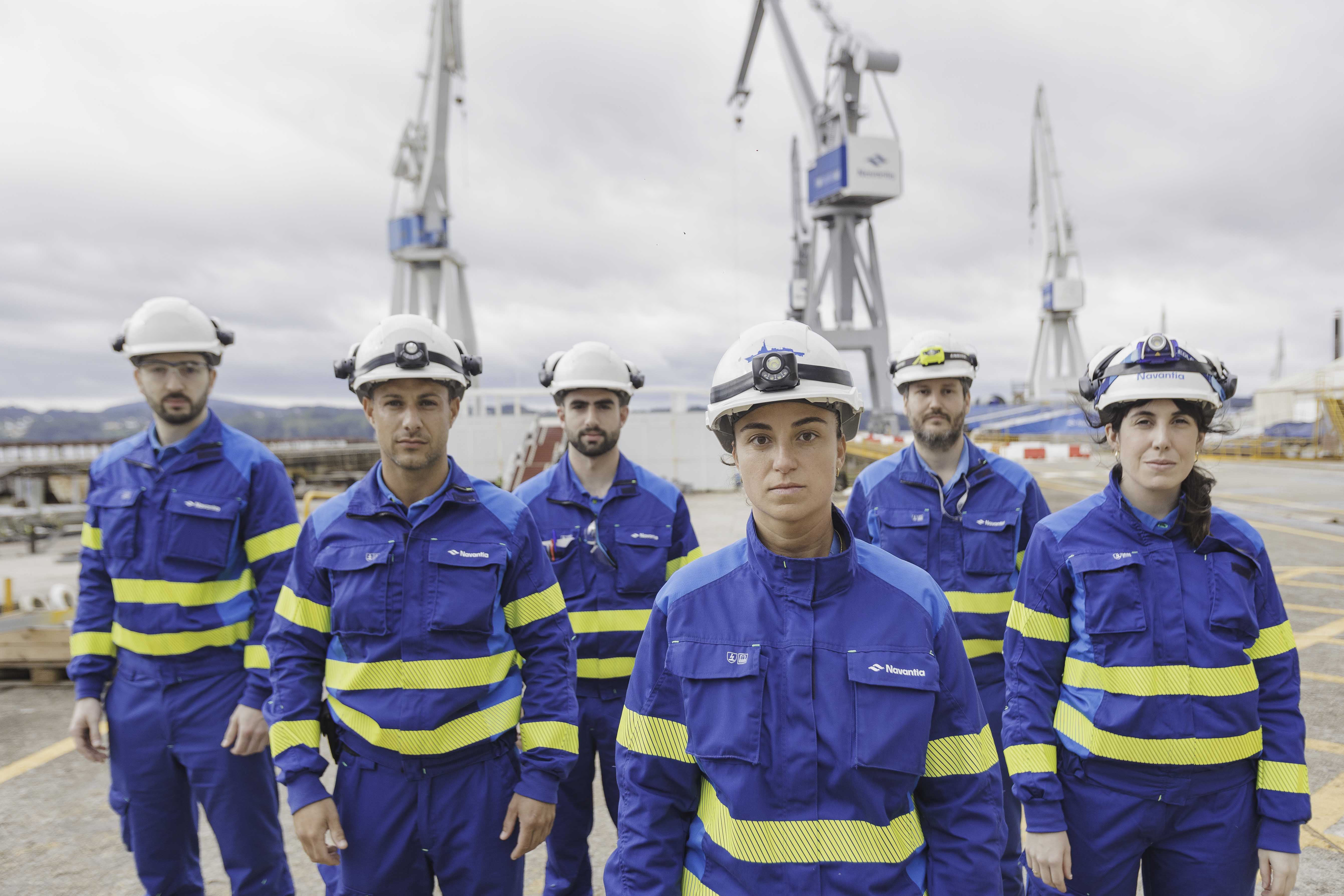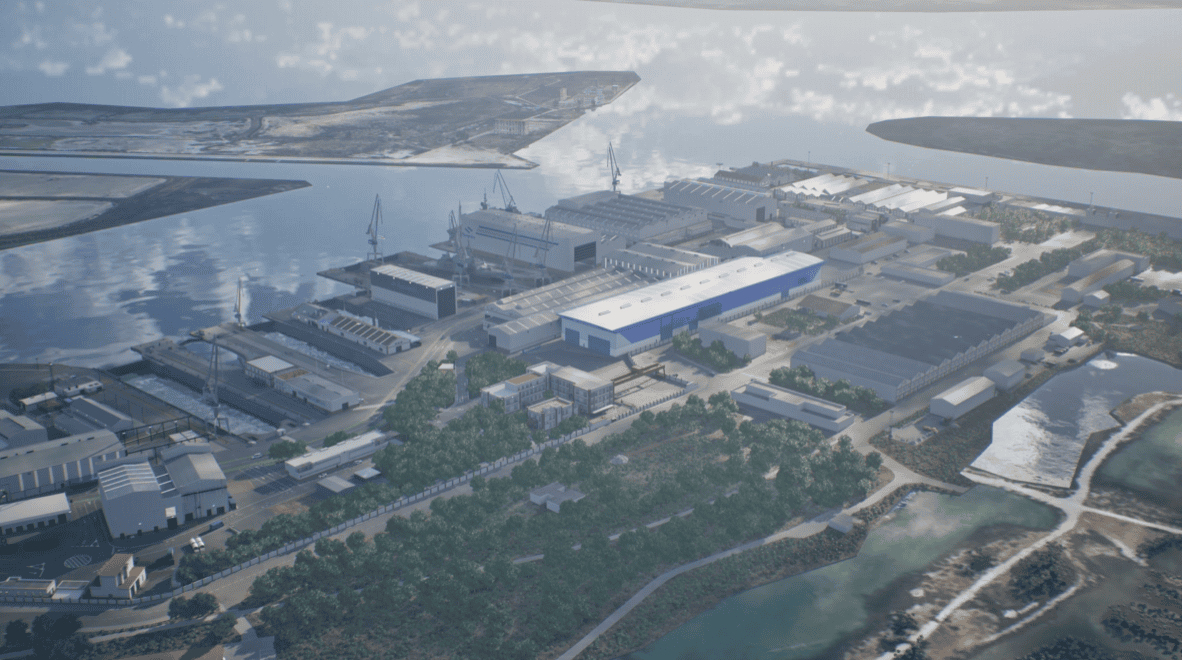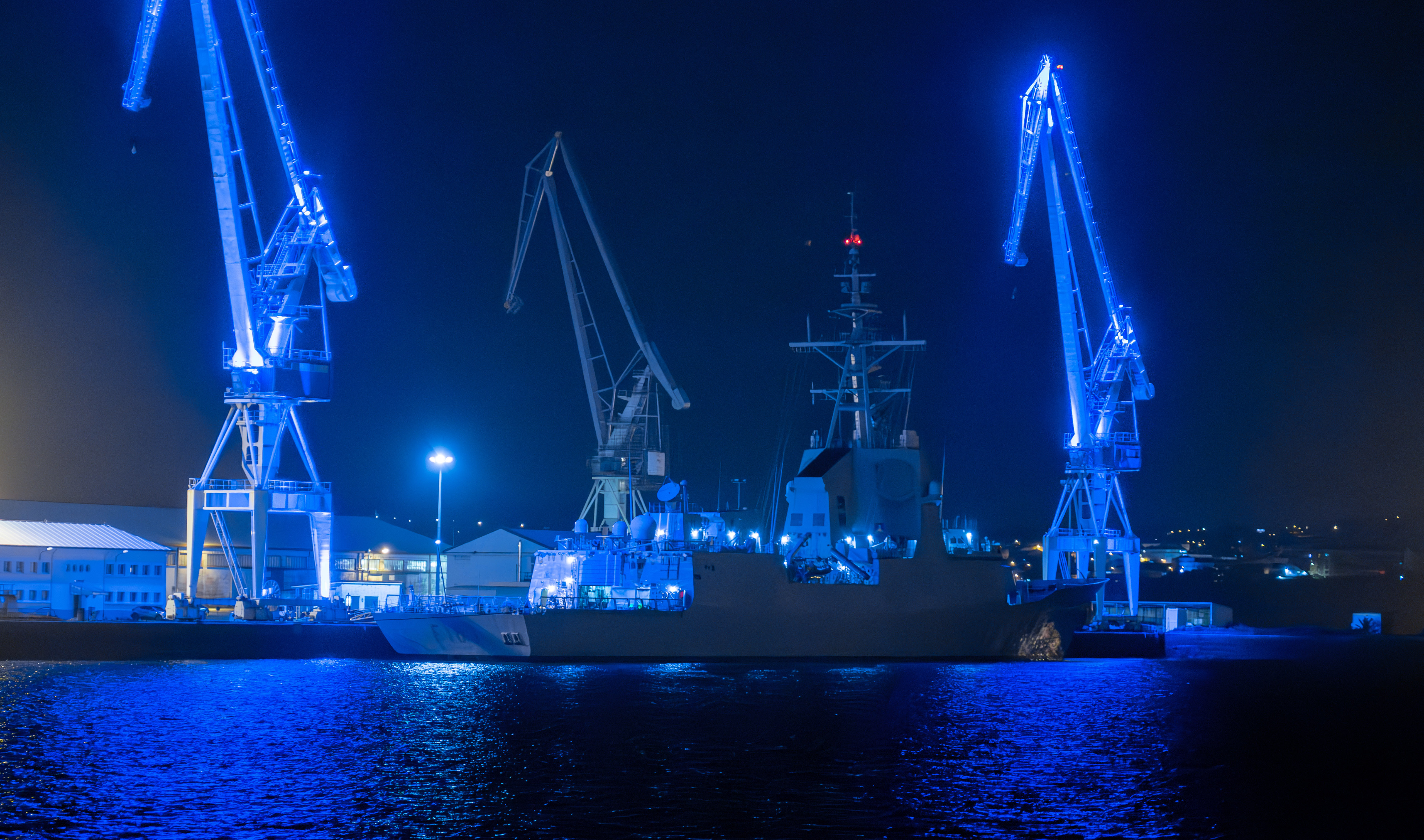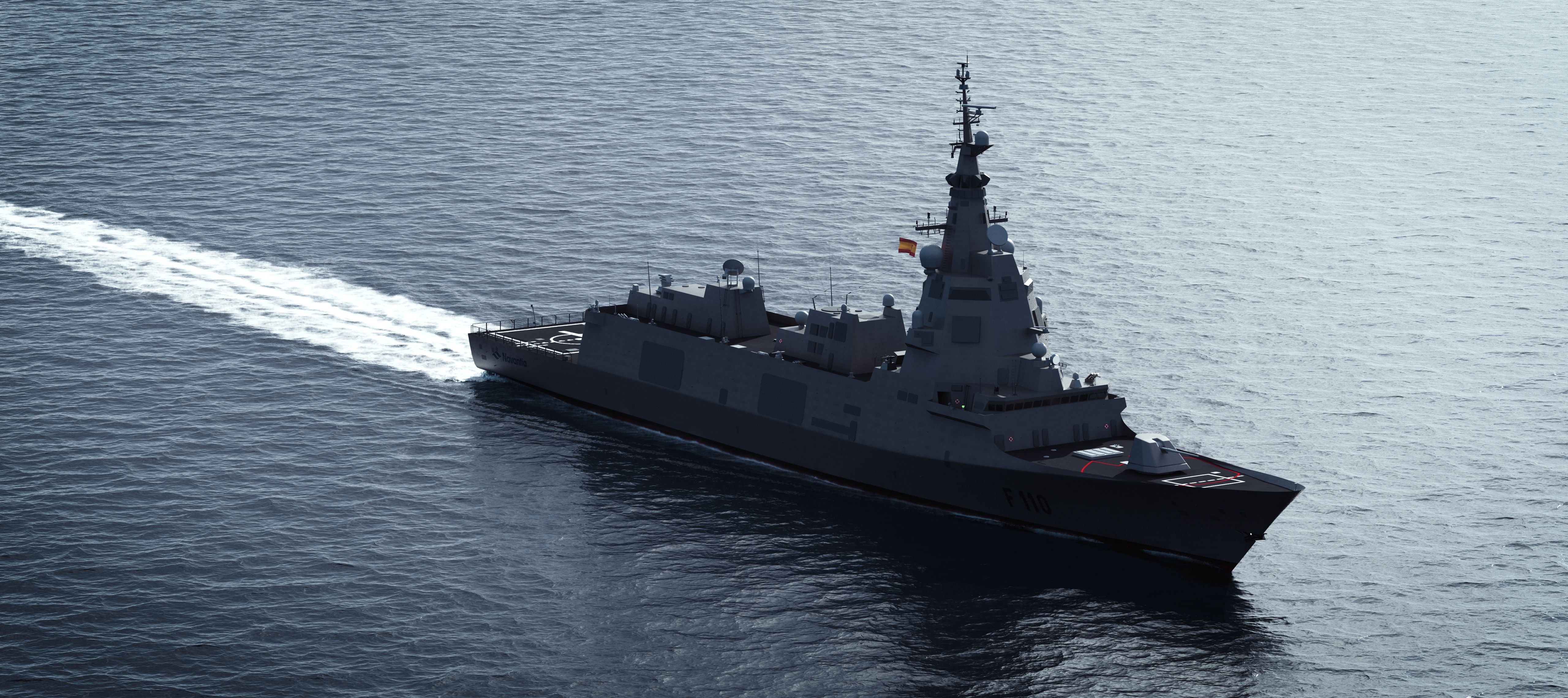The cutting-edge systems of the F110 frigate: a qualitative leap in naval capability
The F110 frigate representes a new generation of multi-purpose escorts with anti-air, anti-submarine, anti-surface and asymmetric warfare capabilities that mark a before and after in the operational capacity of the Navy. It is not only a technologically advanced vessel but also a platform designed to effectively address the current and future challenges of the maritime environment. Every system on board has been conceived to enhance user experience, optimise resources, and reinforce Spain’s strategic autonomy.
1. Digital Twin: real-time operational intelligence
The Digital Twin is a virtual replica of the vessel, constantly updated with real data gathered by sensors distributed throughout the ship. This system enables:
- Informed decision-making in real time
- Maintenance optimisation by anticipating failures and reducing costs
- Improved crew training through accurate simulations
Thanks to this technology, the Navy can operate and maintain the ship even thousands of miles away, increasing efficiency and reducing dependence on physical resources.
2. Integrated Services System (ISS): comfort and efficiency at sea
The ISS transforms the on-board experience through an intelligent architecture that integrates lighting, internal communications and public-address, closed-circuit television cameras, security monitoring, diverse sensorisation, personnel location, and secure wireless connectivity into a single system. This:
- Reduces the amount of cabling, simplifying maintenance
- Enhances the quality of life for the crew with more functional and connected Spaces
- Enables data driven decision making
3. Hybrid propulsion: sustainability and stealth
The COmbined Diesel-eLectric And Gas (CODLAG) integrated power system with electric motors allows the ship to operate in silent mode, ideal for anti-submarine missions. Additionally:
- It reduces environmental footprint thanks to the CODLAG configuration providing greater energy efficiency
- It increases operational versatility, adapting to different mission scenarios
4. Multi-mission space: tactical flexibility
This configurable space allows the vessel to be adapted for various needs:
- Integration of containerised mission modules, enhancing the ship’s operational capability
- Deployment of unmanned vehicles, extending operational reach
- Secondary hangar for helicopters, increasing air capacity
Support for civil and maritime security missions, reinforcing the dual role of the vessel
5. Integrated mast: intelligent and discreet design
The integrated mast groups together the principal ship antennae, which:
- Reduces radar signature, improving survivability
- Provides internal access to sensors, simplifying their maintenance
- Optimises systems integration, facilitating maintenance and technological upgrades
6. Additive manufacturing: logistical autonomy at sea
The incorporation of 3D printers on board allows for the real-time production of spare parts, which:
- Minimises waiting times during extended operations
- Reduces dependency on external logistical chains
- Increases the operational resilience of the vessel
7. SCOMBA combat system
The SCOMBA (Spanish Navy Combat System), developed by Navantia, integrates all the vessel’s combat capabilities into a national architecture, which:
- Facilitates interoperability with other units and allies
- Tactical integration of unmanned vehicles
- Allows for continuous evolution, adapting to new threats






